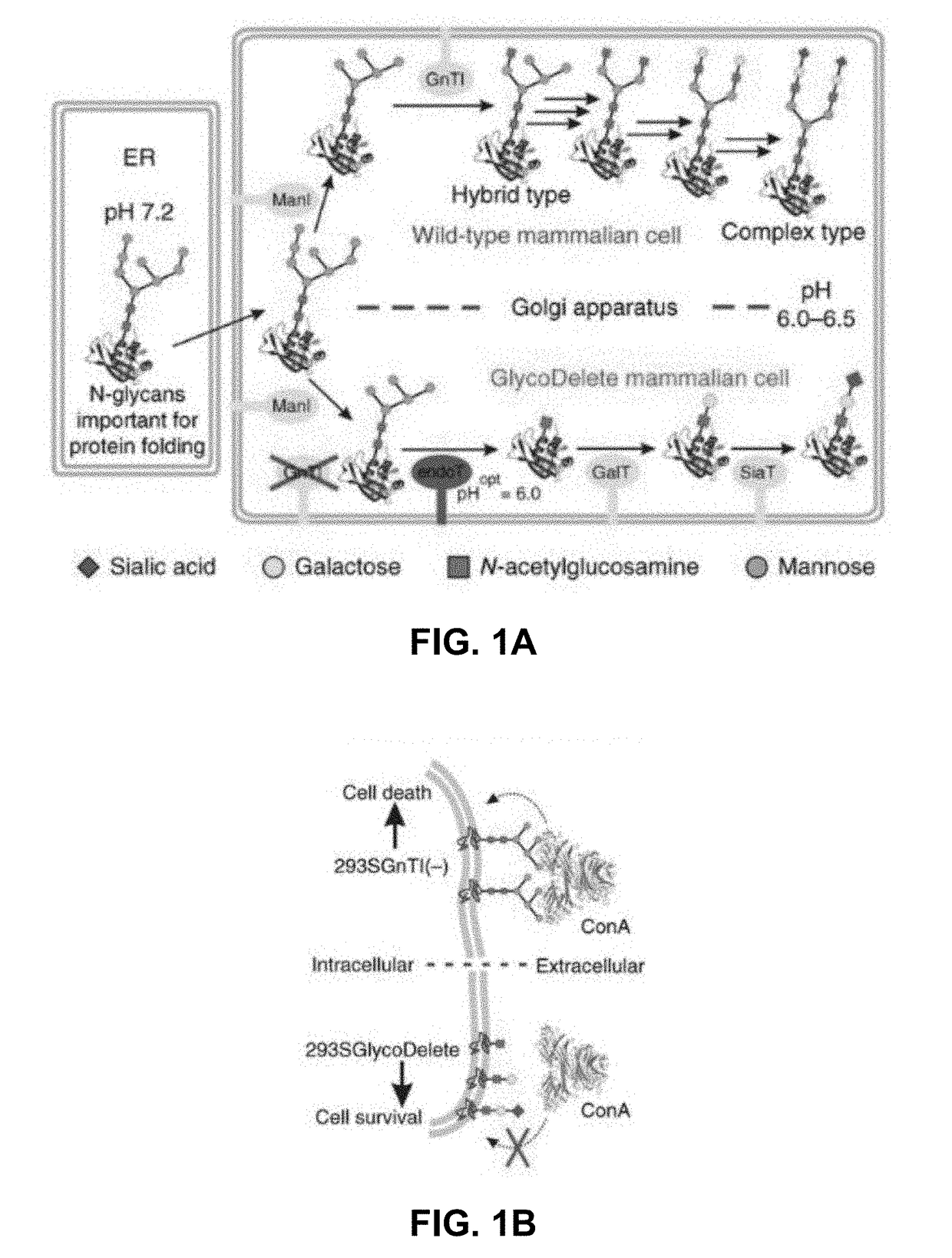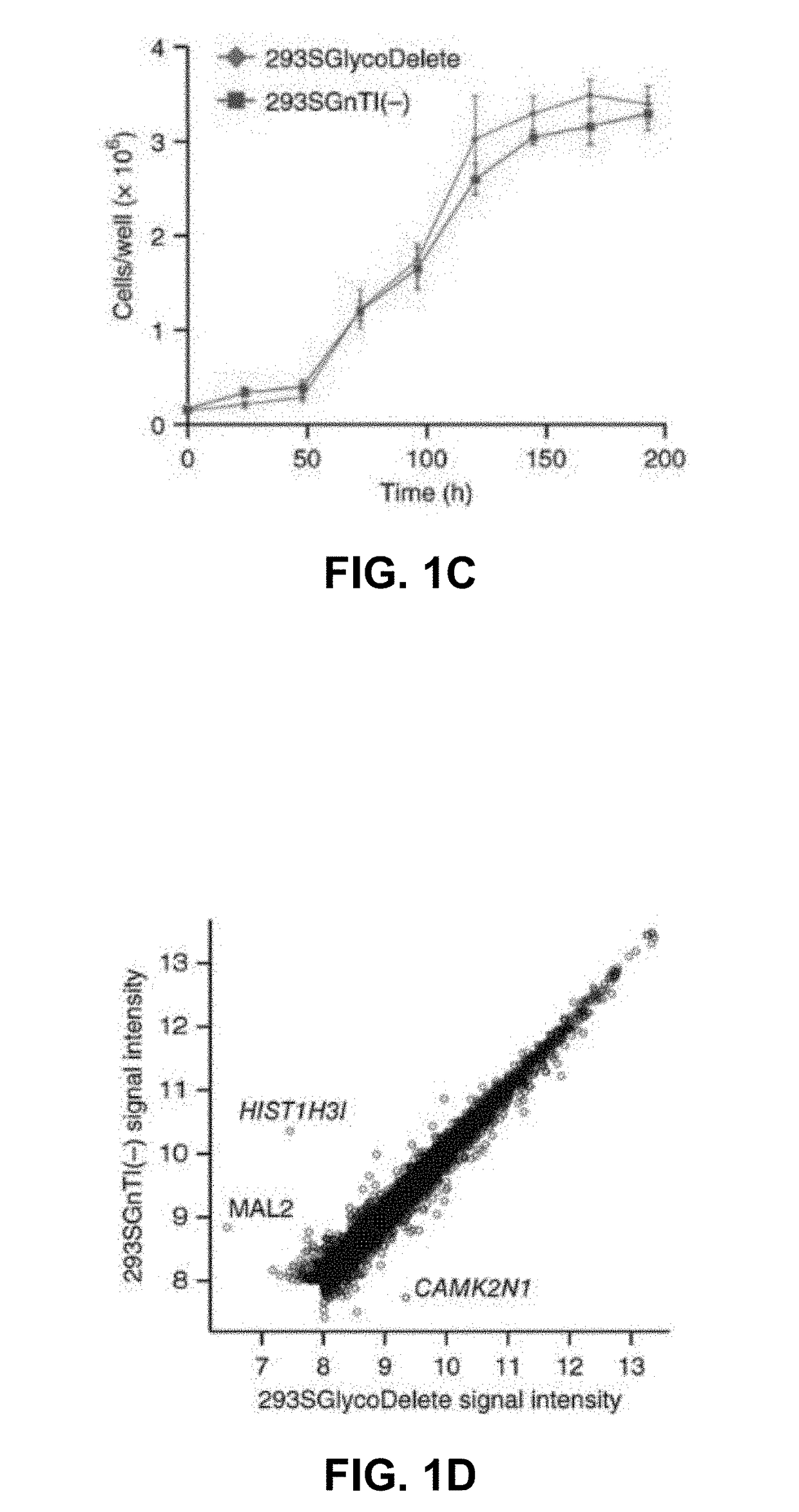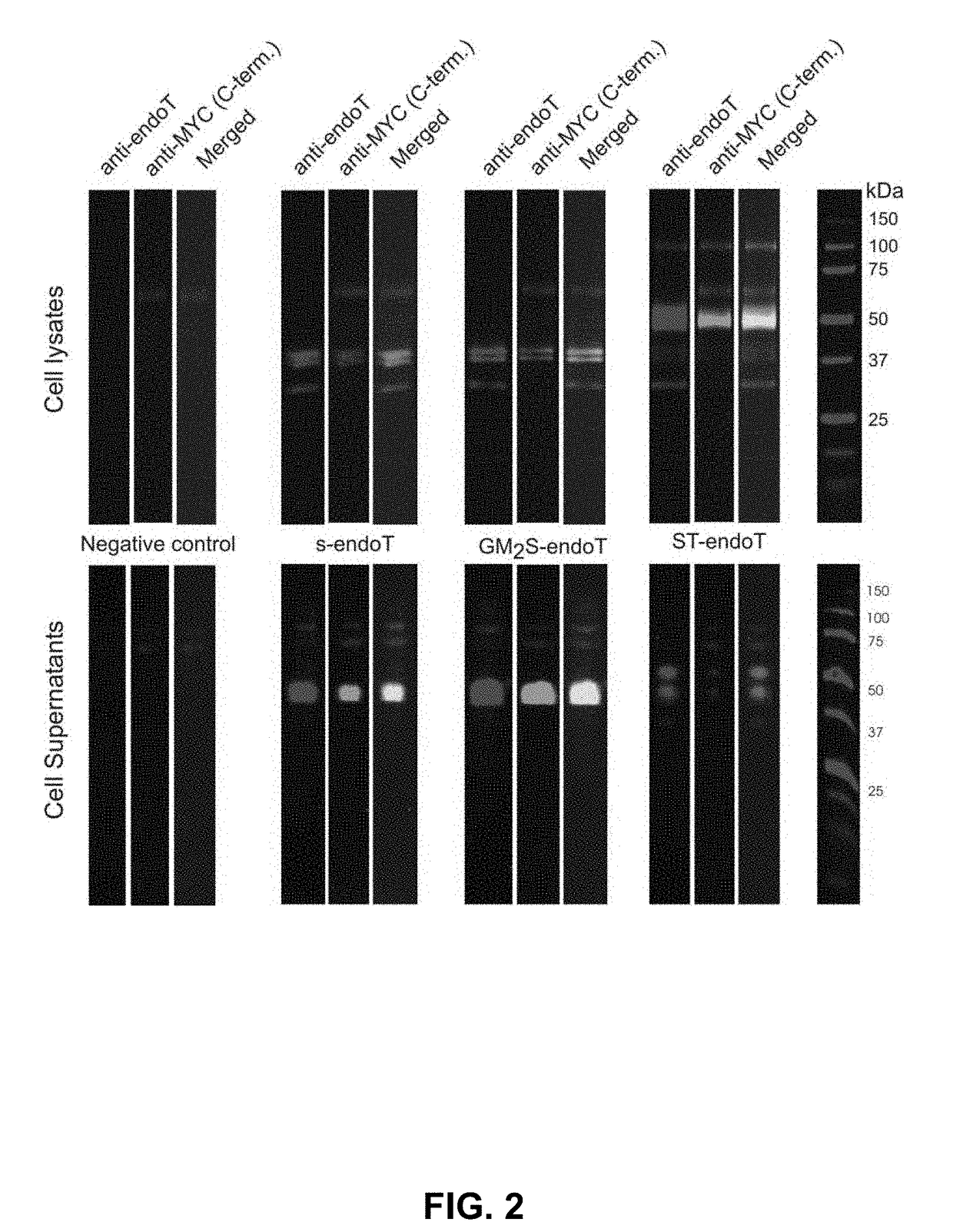Cells producing fc containing molecules having altered glycosylation patterns and methods and use thereof
a technology of fc and molecules, applied in the field of fc-containing molecules glycoengineering, can solve the problems of large heterogeneity in the carbohydrate structure, no longer working with natural sequences, and major differences in antibody glycosylation, etc., to prolong the circulating half-life, and improve the effect of glycosylation efficiency
- Summary
- Abstract
- Description
- Claims
- Application Information
AI Technical Summary
Benefits of technology
Problems solved by technology
Method used
Image
Examples
example 1
Generation of a Stable Cell Line with Altered Glycosylation
[0115]Glycoproteins produced in mammalian cells are often heterogeneous as a consequence of the many biosynthetic steps of complex-type N-glycan synthesis (FIG. 1A). Each step is less than 100% efficient and some enzymes compete for substrates, resulting in many different glycoforms. Therapeutic glycoprotein heterogeneity negatively impacts downstream processing and process reproducibility and can lead to variable efficacy since glycans affect clearance and biological activities.1,2 For instance, the sialic acid content of the glycans often determines pharmacokinetics.3 In tackling the glycan heterogeneity problem, it has to be considered that N-glycans are often critical for protein folding and cannot be simply removed through N-glycosylation site mutagenesis. Here, we introduce a mammalian cell glycoengineering technology that shortcuts the Golgi N-glycosylation pathway to produce proteins with minimal-sized sialylated tri...
example 2
The GlycoDelete Cell Line is Suitable for Expression of Glycoproteins with Reduced Heterogeneity and Length of N-glycans, without Affecting Protein Function.
[0121]The effect of stable GlycoDelete engineering was assessed on a transiently overexpressed, secreted cytokine (the human granulocyte / macrophage colony stimulating factor, hGM-CSF13), on a stably overexpressed GPCR, the 5HT1DR12 (Example 3), on a transiently overexpressed monoclonal antibody (anti-CD20, obinutuzumab)14 (Example 4) and on a transiently overexpressed Fc-containing fusion protein (anti-TNF, etanercept) (Example 5).
[0122]Furthermore, GM-CSF was transiently expressed in 293S, 293 SGnTI− / − and 293 SGlycoDelete cells and purified from the culture medium. GM-CSF produced in 293S or 293 SGnTI− / − cells consists of three main glycoforms (corresponding to occupancy of zero, one or two N-glycosylation sites),15 which are converted to a form of the protein with a lower molecular weight (MW) by treatment with peptide-N-glyc...
example 3
The GlycoDelete Cell Line is Suitable for Stable Expression of Glycoproteins with Reduced Heterogeneity and Length of N-glycans
[0127]To confirm that GlycoDelete is compatible with stable transfection-based protein production and that it can process membrane proteins, a stable cell line was generated in which, next to the stable GlycoDelete engineering, a GPCR, the 5HT1DR, 12 was stably overexpressed. Treatment of membrane protein extracts with PNGaseF revealed a large shift in the molecular weight (MW) of the 5HT1DR stably overproduced in 293SGnTI− / − cells. Contrary to this, whether or not treated with PNGaseF, the receptor produced in 293SGlycoDelete cells ran at approximately the same MW as PNGaseF-treated receptor from 293SGnTI− / − cells. It was concluded that, in 293SGlycoDelete cells, ST-endoT completely hydrolyzed the 5HT1DR N-glycans (FIG. 11).
PUM
| Property | Measurement | Unit |
|---|---|---|
| molecular mass | aaaaa | aaaaa |
| concentrations | aaaaa | aaaaa |
| MW | aaaaa | aaaaa |
Abstract
Description
Claims
Application Information
 Login to View More
Login to View More - R&D
- Intellectual Property
- Life Sciences
- Materials
- Tech Scout
- Unparalleled Data Quality
- Higher Quality Content
- 60% Fewer Hallucinations
Browse by: Latest US Patents, China's latest patents, Technical Efficacy Thesaurus, Application Domain, Technology Topic, Popular Technical Reports.
© 2025 PatSnap. All rights reserved.Legal|Privacy policy|Modern Slavery Act Transparency Statement|Sitemap|About US| Contact US: help@patsnap.com



